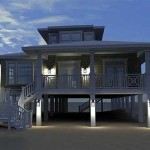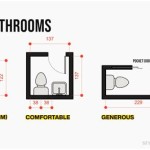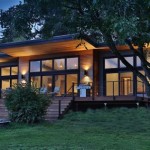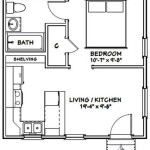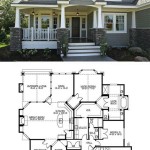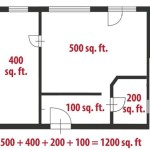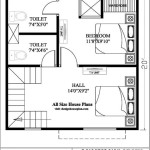2 Bedroom Apartment Floor Plans With Dimensions: A Comprehensive Guide
The selection of an appropriate apartment floor plan is a crucial decision, influencing not only the functionality of the living space but also the overall quality of life for its occupants. Two-bedroom apartments represent a popular choice, offering a balance between affordability, space, and versatility. Understanding the implications of various floor plan layouts, coupled with precise dimensional awareness, is essential for making an informed decision. This article will examine key considerations when evaluating two-bedroom apartment floor plans, focusing on common layouts and the significance of dimensional accuracy.
Understanding Key Elements of a 2-Bedroom Apartment Floor Plan
Before delving into specific floor plan types and dimensions, it is important to identify the critical elements that define a functional and comfortable two-bedroom apartment. These elements extend beyond the simple presence of two bedrooms and encompass the spatial arrangement of various areas, their sizes, and their interrelationships. Careful consideration of these elements ensures that the apartment aligns with the occupants' lifestyle and needs.
First, the living area serves as the central hub of the apartment, requiring sufficient space for relaxation, entertainment, and socializing. The dimensions of the living room directly impact its usability and aesthetic appeal. A smaller living room might necessitate minimalist furniture and restrict the number of guests accommodated, while a larger living room offers greater flexibility in furniture arrangement and activity allocation. The relationship of the living room to other areas, such as the kitchen and dining area, also plays a significant role. An open-concept design, where the living room seamlessly flows into the kitchen and dining area, promotes a sense of spaciousness and facilitates social interaction. Conversely, a more compartmentalized layout might prioritize privacy and noise reduction.
Second, the kitchen's size and layout are paramount, especially for individuals who enjoy cooking and entertaining. A well-designed kitchen maximizes efficiency and minimizes wasted space. Factors such as countertop area, storage capacity, and appliance placement significantly influence the kitchen's functionality. Dimensions should be considered in relation to the number of occupants and their cooking habits. A single occupant might find a compact kitchen sufficient, while a family or frequent entertainer would benefit from a larger, more elaborate kitchen with ample counter space and storage.
Third, each bedroom requires adequate space for sleeping, storage, and personal activities. The master bedroom typically features a larger footprint and includes amenities such as a walk-in closet or an en-suite bathroom. The second bedroom may be smaller and serve as a guest room, home office, or bedroom for children. Dimensional considerations are critical to ensure that each bedroom can comfortably accommodate a bed, dresser, desk (if needed), and other essential furniture items, while still allowing for adequate movement and circulation.
Fourth, bathrooms are crucial for hygiene and convenience. A two-bedroom apartment may have one or two bathrooms. A master bathroom connected to the master bedroom offers enhanced privacy and convenience, while a second bathroom accessible to both bedrooms and guests ensures functionality for all occupants. The dimensions of the bathroom should allow for comfortable use of the fixtures, including the toilet, sink, and shower or bathtub. Adequate storage for toiletries and linens is also an important consideration.
Finally, storage space is often overlooked but is essential for maintaining an organized and uncluttered living environment. Closets in each bedroom are standard, but additional storage space, such as a linen closet, pantry, or utility closet, can greatly enhance the apartment's functionality. The dimensions of these storage areas should be sufficient to accommodate the occupants' belongings and avoid the need for external storage solutions.
Exploring Common 2-Bedroom Apartment Floor Plan Layouts
Two-bedroom apartments exhibit diverse floor plan layouts, each with distinct advantages and disadvantages. Understanding these variations allows prospective tenants or buyers to select a floor plan that best suits their specific needs and preferences.
A common layout is the "side-by-side" design, where the two bedrooms are situated adjacent to each other, typically sharing a wall. This layout is often found in older apartment buildings and can be advantageous in terms of cost-effectiveness and ease of construction. However, the proximity of the bedrooms can also result in reduced privacy and increased noise transmission. The dimensions of each bedroom are usually similar, and the living area is typically located at the opposite end of the apartment, creating a clear separation between the living and sleeping spaces. The kitchen may be either open to the living area or enclosed in a separate room.
Another popular layout is the "split-bedroom" design, where the two bedrooms are located on opposite sides of the living area. This layout offers enhanced privacy, as the living area acts as a buffer zone between the bedrooms, minimizing noise transmission and visual intrusion. The master bedroom is often larger and includes an en-suite bathroom, while the second bedroom may be smaller and located closer to the entrance of the apartment. The kitchen and dining area are typically situated near the living area, creating a cohesive and functional living space. This layout is often preferred by families with children or roommates who value their privacy.
A less common but increasingly popular layout is the "corner unit" design. This layout usually occupies a corner of the building, offering expansive views and abundant natural light. The two bedrooms are typically located on opposite sides of the apartment, maximizing privacy. The living area is often larger and features more windows, creating a bright and airy living space. Corner units typically command a premium price due to their desirable location and enhanced amenities. The dimensions of corner units can vary significantly, depending on the building's design and the overall size of the apartment.
In recent years, open-concept designs have gained popularity in two-bedroom apartments. These layouts eliminate walls between the living area, kitchen, and dining area, creating a seamless and interconnected living space. Open-concept designs promote social interaction and enhance the sense of spaciousness. However, they can also result in reduced privacy and increased noise levels. The dimensions of open-concept apartments are typically larger than those of compartmentalized layouts, as the living area serves multiple functions. The bedrooms are usually located at the opposite end of the apartment, providing a degree of separation from the main living area.
Finally, some two-bedroom apartments feature a "duplex" or "townhouse" style layout, where the living space is spread over two floors. This layout offers enhanced privacy and spatial separation, as the bedrooms are typically located on the upper floor, while the living area and kitchen are located on the lower floor. Duplex and townhouse apartments often feature private entrances and outdoor spaces, such as patios or balconies. The dimensions of duplex and townhouse apartments can vary significantly, depending on the building's design and the overall size of the unit.
The Importance of Accurate Dimensions
Obtaining accurate dimensions of a two-bedroom apartment floor plan is vital for several reasons. These measurements allow potential occupants to determine whether their existing furniture will fit comfortably within the space, plan for renovations or modifications, and assess the overall functionality of the layout. Failure to accurately assess the dimensions can lead to costly mistakes and dissatisfaction with the living space.
Furniture placement is directly influenced by the dimensions of the rooms. Ensuring that a bed fits comfortably in the bedroom, that a sofa fits in the living room, and that a dining table fits in the dining area are critical considerations. Prior to viewing an apartment, prospective tenants should measure their existing furniture and compare these measurements to the dimensions provided in the floor plan. This will help to avoid the disappointment of discovering that key furniture items do not fit in the new space. It's important to allow for adequate circulation space around furniture to ensure comfortable movement and prevent a cramped feeling.
Renovations and modifications require precise dimensional information. Whether the goal is to install new flooring, paint the walls, or remodel the kitchen or bathroom, accurate measurements are essential for calculating the required materials and labor. Incorrect dimensions can lead to overspending on materials or, conversely, insufficient quantities to complete the project. Similarly, when modifying the layout of the apartment, such as removing a wall or adding a new partition, accurate dimensions are needed to ensure that the changes comply with building codes and regulations.
Functionality and flow within the apartment are also directly related to the dimensions of the various rooms and their Interrelationships. A well-designed apartment should allow for easy movement between rooms and prevent bottlenecks or congested areas. Accurate dimensions can help to identify potential problems with the layout, such as a narrow hallway or a cramped kitchen. By carefully considering the dimensions of each room, prospective tenants can assess the overall functionality of the apartment and determine whether it meets their specific needs and preferences. For example, consider the hallway width. Inadequate hallway width may make moving large items such as furniture difficult.
Moreover, understanding the dimensions of windows and doorways is crucial for selecting appropriate window coverings and door hardware. Incorrect measurements can lead to ill-fitting curtains, blinds, or shades, as well as difficulties in installing new doors or locks. Accurate window and door dimensions are also important for energy efficiency, as they can help to determine the appropriate size and type of window coverings needed to reduce heat loss or gain.
In conclusion, accurate dimensional information is an indispensable tool for evaluating two-bedroom apartment floor plans. It enables prospective tenants or buyers to make informed decisions about furniture placement, renovations, functionality, and overall suitability of the living space. Taking the time to obtain and analyze accurate dimensions can ultimately lead to a more satisfying and comfortable living experience.

Add Stairs More Storage Plus Patio And Or Garage House Plans Design 2 Bedroom Apartment Floor Plan Two

25 Best 2 Bedroom Apartment Floor Plan Ideas Small House Plans

2 Bedroom Layout Small Apartment Plans Floor Plan

25 Best 2 Bedroom Apartment Floor Plan Ideas Small House Plans

2 Bedroom Apartment Plan Examples

Free Editable Apartment Floor Plans Edrawmax

Apartment R 2 Bedroom Block Design David Chola Architect

Third Ward Two Bedroom Apartments Jackson Square

2x2 B2 2 Bed Apartment Alpha Mill

2 Bedroom 1 Bathroom Bed Apartment Briarwood Village
Related Posts

